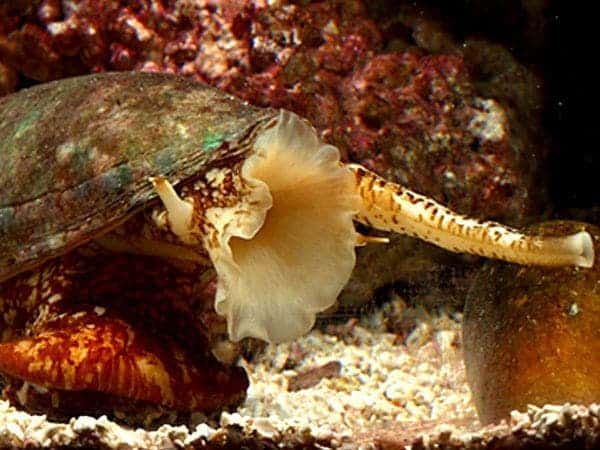The new drug is the most promising since morphine was introduced – it is 100 times more potent than existing pain medications, but it works at very low doses, without inducing the risk of addiction.
Predator snails and painkillers
Snail venom in a pill could offer powerful relief for people suffering from severe (acute or chronic) pain – including patients of cancer, diabetes, multiple sclerosis, HIV/AIDS, car accidents and many more other conditions.
Cone snail venom particularly has inspired researchers to develop a medication that can be taken orally — a major leap forward, from previous studies which showed that it can be used when directly injected in the spinal cord. In rodent studies, the drug appeared to work much better than virtually all existing painkillers, at lower doses and without risks of addiction.
“Since we started getting some publicity, I’ve received dozens of e-mails from people all over the world asking me if they can get into clinical trials,” said David Craik, a chemist at the University of Queensland in Australia, adding that he’s still seeking funding and government approval before trials can begin. “I’ve really been overwhelmed with some of the sad stories people have e-mailed,” he said. “There’s a great need for new treatments.”
Cone snails are predatory sea snails, marine gastropod molluscs live in tropical waters around the world. When they want to hunt, they use long, flexible proboscis (tubular mouthpart) as a lure and then as a harpoon. Just like a syringe needle, the proboscis injects the prey with a venom that instantly paralyzes it. The strength of the venom lies in hundreds of tiny proteins, called peptides.
African medicine to the rescue!
The main problem was developing a treatment from these peptides which can be administered orally. Surprisingly enough, researchers found the solution in traditional African medicine – in a plant that can accelerate labor and child birth. Chemical analyses showed that the active ingredient in the plant was a peptide with the unusual shape: a circle. That shape, it turned out, made it much more stable than others peptides. Based on these findings, scientists were able to engineer the peptides in the snail venom, add a few more aminoacids to them, thus making them in circle shapes.
The advance is an elegant example of taking two lessons from nature, combining them, and making something that’s even better,” said Michael McIntosh, a professor of biology and psychiatry at the University of Utah School of Medicine in Salt Lake City.
The results were absolutely thrilling: the molecule reduced pain for over 4 hours at doses more than 100 times smaller than typical doses of gabapentin, the main drug used to treat nervous system pain. Furthermore, it showed none of the unpleasant side effects that are often associated with gabapentin. The new drug was also 100 times more powerful than morphine.
Researchers add that they have only studied a tiny fraction of the peptides in the cone snail venom – pointing out that nature has way, way more to teach us, and we’ve only just began scratching the surface.
“This points out that nature has a lot to teach us,” McIntosh said. “It’s essential that we preserve the sources of these natural compounds to enable further similar discoveries.”
Their results were published in Angewandte Chemie.










